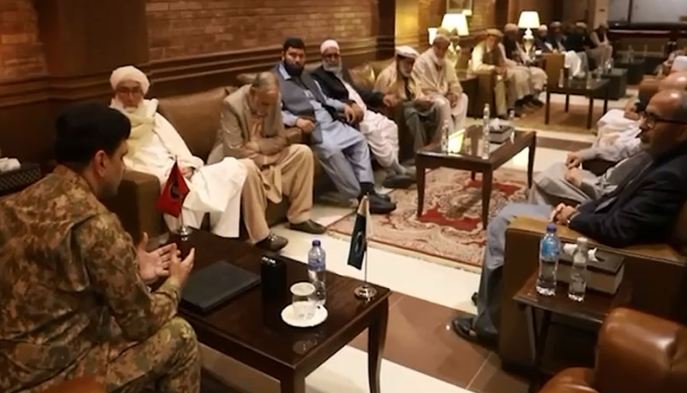Shamim Shahid
Kurram, a tribal district in Khyber Pakhtunkhwa, Pakistan, holds strategic importance due to its shared border with Afghanistan. However, this region has been plagued by sectarian violence for over four decades, starting in the mid-1980s. These conflicts, which were externally and internally sponsored, have resulted in the tragic loss of hundreds of lives from both sides of the sectarian divide. Although authorities have recently managed to enforce a fragile peace, the underlying issues remain, threatening to reignite the conflict. To achieve a lasting peace, it’s crucial for the government to move beyond temporary measures and address the deep-seated, root causes of this animosity.
The recent peace agreement, brokered by authorities, represents a significant achievement. It involved disarming numerous individuals and forcing elders from both sides to sign a peace accord. A key event in this process was the Peace and Development Conference held in Parachinar, the district headquarters. This conference, organized by the 73 Brigade, brought together a wide range of stakeholders, including military and civil officials, tribal elders, religious scholars, and media representatives. The discussions focused on reviewing development projects, strengthening tribal harmony, and charting a path toward sustainable peace.
During the conference, speakers highlighted the importance of inter-tribal unity and the continuity of development initiatives. Tribal elders voiced their concerns, urging authorities to prioritize the resolution of revenue-related disputes, accelerate public welfare schemes, and ensure community participation in local governance. They also called for decisive action against those using social media and other platforms to incite hatred and unrest. The conference concluded with a collective promise from all participants to work together for the progress, peace, and prosperity of Kurram. The efforts of Commissioner Kohat and the Commander of the 73rd Brigade in organizing this event are commendable, as it marks a move away from the traditional, ineffective “business as usual” approach.
While these recent efforts are a positive step, they represent a fragile truce, not a durable solution. A lasting peace in Kurram requires a fundamental shift in strategy—from managing conflict to eliminating its root causes. For decades, sectarian and religious hatred has been mysteriously promoted for nefarious strategic and economic purposes, a legacy inherited from the Cold War era. This externally influenced animosity has not only destabilized regions like Pakistan and Afghanistan but has had a ripple effect across Asia and the world. The true objectives of this religious and sectarian extremism—including remote-controlled violence and terrorism—are now becoming clearer. They do not serve the interests of the local population, whether they are the governed or those in power.
The persistent violence has exhausted the people of Kurram, as well as the broader populace of Khyber Pakhtunkhwa and the entire country. They yearn for a durable and sustainable peace, which is a fundamental human right. Therefore, the responsibility now falls on those in positions of power—in parliament, the executive, the judiciary, and the media—to address their duties at this crucial juncture. Instead of acting as silent spectators or unwitting partners in the perpetuation of this conflict, they must focus on dismantling the mechanisms that generate and sustain sectarian and religious hatred.
This means tackling the financial and ideological networks that fuel extremism. It also means investing in education that promotes tolerance and unity rather than division. A crucial part of this is empowering local communities and giving them a genuine stake in their own governance and development. When people feel that their voices are heard and that they have a say in their future, they are less likely to be swayed by external forces seeking to sow discord.
The long-term solution must also involve economic upliftment. Poverty and a lack of opportunities often create fertile ground for extremist ideologies to take root. By accelerating public welfare schemes and resolving revenue-related issues, as requested by the tribal elders, the government can address some of the material deprivations that contribute to unrest.
The use of social media as a tool for inciting violence is another critical issue that requires a nuanced response. While freedom of speech is important, deliberate incitement to hatred should not be tolerated. Authorities must work with social media companies and local communities to develop effective strategies for combating misinformation and hate speech without resorting to heavy-handed censorship that could further alienate the populace.
Ultimately, a durable peace in Kurram is not just about a lack of fighting; it is about the presence of justice, opportunity, and reconciliation. It requires a holistic approach that acknowledges the historical, political, and economic dimensions of the conflict. By addressing these root causes, authorities can transform Kurram from a symbol of sectarian strife into a model of peace and progress, demonstrating that unity can overcome the most deeply entrenched divisions. The people of Kurram deserve to live in a secure and prosperous environment, and it is the collective responsibility of all stakeholders to make this a reality.

















